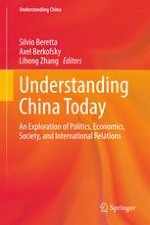Excerpt
The ‘parallel lives’ of men and of states—from Plutarch to Toynbee—has become a well-established literary genre. But when the parallel lives of the great socio-political aggregates are recounted through an organised sequence of images of works which have been produced by these empires, the resulting narrative sheds new light, by virtue of being ‘illustrated’, on the events being compared and on how they evolved over time. Our perceptions of these events, especially when they take place over a large number of centuries, become even clearer, and the analogies, as well as the differences, become easier to understand. The weighty tome that accompanies the exhibition which was on display in the rooms of the Palazzo Reale in Milan in 2010 (De Caro and Scarpari
2010a), is a powerful example of this communicative mode and shows how effective it can be. The works exhibited and illustrated varied enormously. They include statues and bas-reliefs, coins and everyday artefacts in times of war and peace, mosaics and frescoes, bronzes and jewels, urns and work tools, models of buildings and fantastic figures, fabrics and sarcophagi, as well as jades and paintings. The parallel stories that gave life to the superb handmade objects that filled the rooms of the exhibition were, in turn, those of the empire of the Eagle—Rome—and those of the empire of the Dragon—China—respectively in the centuries that span, in the case of Rome, from 753 BC. (the city’s traditional foundation date) to the end of the Western empire in 476 AD (the year in which Romulus Augustus was deposed) and, in the case of China, which span from 1045 BC (the date of the beginning of the Zhou dynasty, the last pre-imperial dynasty) to 317 AD (with the end of the reign of the Western Jin dynasty). Wars and social struggles, kingdoms and principalities and dynasties, victories as well as defeats and pillaging mark the history of the Roman eagle in the space of over one thousand two hundred years, in a series of temples, walls, aqueducts, amphitheatres, monuments, arches, poems and, finally, basilicas. On the other side of the world revolts and insurrections, defeats and restorations, armies and conquests and, once again, kingdoms and principalities and dynasties, in turn, accompany the history of the Chinese dragon for almost one thousand four hundred years (largely overlapping with those of Rome) in a succession of ceremonies and new styles of writing, philosophers and philosophies, religions and inventions, burnings of books and imperial libraries (De Caro and Scarpari
2010b, pp. 364–367). …
